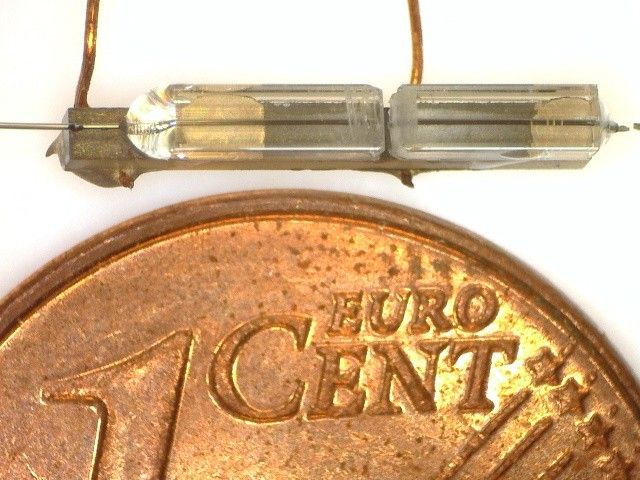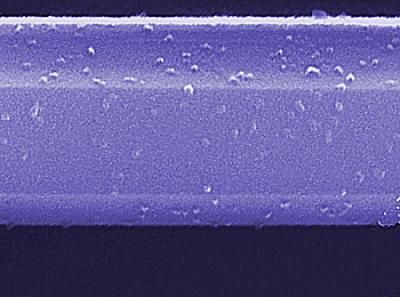Innovations through hair-thin optical fibres
Study shows what miniaturised optical filters make possible
Scientists at the University of Bonn have built hair-thin optical fibre filters in a very simple way. They are not only extremely compact and stable, but also colour-tunable. This means they can be used in quantum technology and as sensors for temperature or for detecting atmospheric gases. The results have been published in the journal “Optics Express”.

The miniaturised optical filter is located in the central slot of the sleeve mount.
© Uni Bonn
Optical fibers not much thicker than a human hair today not only constitute the backbone of our world-wide information exchange. They are also the basis for building extremely compact and robust sensors with very high sensitivity for temperature, chemical analysis and much more.
Optical resonators or filters are important components cutting out very narrow spectral lines from white light sources. In the simplest case such filters are built from two opposing mirrors tossing light back and forth as precisely as the pendulum of a clock work. The color of the filtered light is set by the mirror separation.
Suitable mirrors with high quality have been integrated with the end of such hairlike fibers for some time. Researchers of the University of Bonn have succeeded to build in a simple way such hairlike optical fiber resonators. They are not only extremely compact and stable but also allow to tune their color: they have glued the fiber ends carrying the mirrors into a common ferrule which can be stretched by means of a piezo crystal and hence control the mirror separation.
"The miniaturised optical filter makes a further contribution to making photonics and quantum technologies the decisive technology of the 21st century," says Prof. Dr. Dieter Meschede from the Institute of Applied Physics at University of Bonn. The scientist is a member of "Matter and light for quantum computing" (ML4Q) Cluster of Excellence of the Universities of Bonn and Cologne and RWTH Aachen University and is also a member of the Transdisciplinary Research Area “Building Blocks of Matter and Fundamental Interactions” at the University of Bonn.
Miniaturized highly stable optical precision filters are promising multiple applications: they can store light energy within such a small volume such that already single photons can be efficiently stored and manipulated. Their high sensitivity suggests to build extremely compact and selective sensors, e.g. for detecting atmospheric gases. Using even more stable materials for the ferrule tiny optical clock works with extremely high frequency stability may be built.
Original publication
Other news from the department science
These products might interest you
Most read news
More news from our other portals
See the theme worlds for related content
Topic world Sensor technology
Sensor technology has revolutionized the chemical industry by providing accurate, timely and reliable data across a wide range of processes. From monitoring critical parameters in production lines to early detection of potential malfunctions or hazards, sensors are the silent sentinels that ensure quality, efficiency and safety.

Topic world Sensor technology
Sensor technology has revolutionized the chemical industry by providing accurate, timely and reliable data across a wide range of processes. From monitoring critical parameters in production lines to early detection of potential malfunctions or hazards, sensors are the silent sentinels that ensure quality, efficiency and safety.
































































